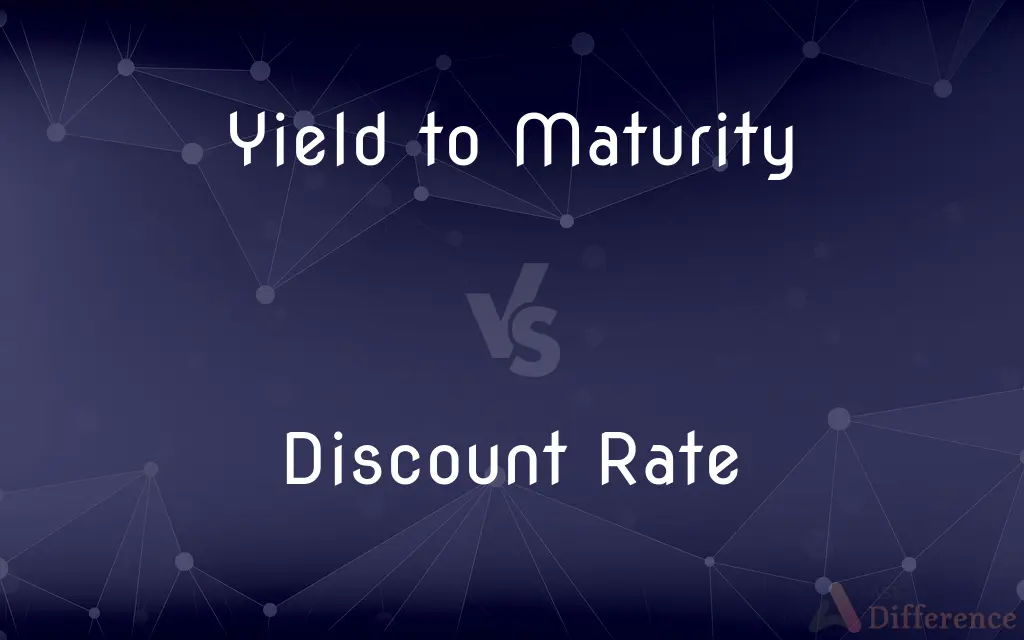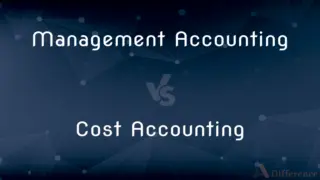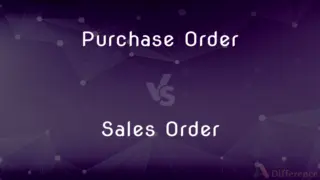Yield to Maturity vs. Discount Rate — What's the Difference?
By Tayyaba Rehman — Published on October 26, 2023
Yield to Maturity (YTM) represents the total return expected from a bond if held to maturity, whereas Discount Rate is the interest rate used to determine the present value of future cash flows.

Difference Between Yield to Maturity and Discount Rate
Table of Contents
ADVERTISEMENT
Key Differences
Yield to Maturity and Discount Rate are two pivotal financial concepts used in investment decision-making and analysis. Yield to Maturity, commonly abbreviated as YTM, is a measure that reveals the total anticipated return on a bond if it's held until it matures. This takes into account periodic interest payments and the repayment of the bond's face value at maturity. Discount Rate, on the other hand, is utilized to ascertain the present value of anticipated future cash flows. Essentially, it's the rate at which future cash flows are discounted back to the present.
Both Yield to Maturity and Discount Rate play a significant role in financial analysis. When evaluating a bond as an investment, YTM offers an insight into what one can expect as an annualized return, assuming the bond is kept until its maturity date. Conversely, the Discount Rate is often used in discounted cash flow analysis, enabling investors to discern the current value of future income streams, considering the time value of money.
While they may seem similar in nature, Yield to Maturity and Discount Rate serve distinct purposes. YTM exclusively pertains to bonds and gives a comprehensive perspective of potential returns, including interest payments and the bond's face value. The Discount Rate is broader in application and can be used across various assets and investments, not confined solely to bonds.
Furthermore, the sources of these rates are different. Yield to Maturity is intrinsically tied to the bond's market price, coupon rate, and time to maturity. Meanwhile, the Discount Rate can be derived from various sources, including the expected rate of return from alternative investments or the cost of capital.
Comparison Chart
Definition
Total return expected from a bond if held to maturity.
Interest rate to determine the present value of future cash flows.
ADVERTISEMENT
Application
Exclusively related to bonds.
Used across various assets and investments.
Reflects
Comprehensive potential returns including interest and face value.
Current value of expected future income streams.
Derived from
Bond's market price, coupon rate, time to maturity.
Expected return on alternative investments or cost of capital.
Importance in analysis
Evaluates bond as an investment.
Evaluates the present value of future income streams.
Compare with Definitions
Yield to Maturity
YTM takes into account periodic interest and principal repayment.
Given its semi-annual interest payments, the Yield to Maturity gave a comprehensive view of potential earnings.
Discount Rate
Discount Rate is utilized in discounted cash flow analysis.
By applying the appropriate Discount Rate, she assessed the investment's worth over a 5-year span.
Yield to Maturity
Yield to Maturity is a bond's total anticipated return.
The bond's Yield to Maturity was 5%, making it an attractive investment.
Discount Rate
Different investments might have different Discount Rates.
Riskier projects often have a higher Discount Rate to account for uncertainty.
Yield to Maturity
YTM reflects the bond's current market price.
As bond prices fluctuate, so does the Yield to Maturity.
Discount Rate
The Discount Rate can be influenced by external economic factors.
Central banks' decisions can impact the prevalent Discount Rate in the economy.
Yield to Maturity
Yield to Maturity assumes the bond is held until it matures.
If sold early, the actual return might deviate from the projected Yield to Maturity.
Discount Rate
Discount Rate gauges the present value of future cash flows.
A higher Discount Rate reduces the present value of future earnings.
Yield to Maturity
YTM aids in comparing different bond investment opportunities.
Comparing the Yield to Maturity of various bonds helped her select the best option.
Discount Rate
The Discount Rate represents the time value of money.
Considering inflation, he used a 7% Discount Rate to evaluate his investment.
Common Curiosities
Can YTM be negative?
Yes, in some low-interest-rate environments, bonds can have a negative YTM.
How does the Federal Reserve's decisions impact the Discount Rate?
The Federal Reserve's decisions can influence interest rates in the economy, which in turn can affect the Discount Rate used by investors.
Why is the Discount Rate crucial in investment analysis?
It helps determine the present value of future cash flows, accounting for the time value of money.
Do Yield to Maturity and Discount Rate measure the same thing?
No, YTM measures total expected return on a bond, while Discount Rate evaluates the present value of future cash flows.
What factors influence a bond's Yield to Maturity?
Factors include the bond's market price, coupon rate, and time to maturity.
Why might two different projects have different Discount Rates?
Riskier projects usually have a higher Discount Rate to account for greater uncertainty.
Is Yield to Maturity the same as the bond's coupon rate?
No, while the coupon rate is a fixed interest rate on a bond, YTM considers the bond's current price and expected total returns.
Can the Yield to Maturity change over time?
Yes, as market conditions and bond prices fluctuate, YTM can also change.
How is the appropriate Discount Rate for a project determined?
It's often based on the expected return on alternative investments or the cost of capital, adjusted for the project's risk.
How do bond duration and Yield to Maturity relate?
Duration measures a bond's sensitivity to interest rate changes, and bonds with longer durations are often more sensitive to changes in YTM.
Share Your Discovery

Previous Comparison
Management Accounting vs. Cost Accounting
Next Comparison
Purchase Order vs. Sales OrderAuthor Spotlight
Written by
Tayyaba RehmanTayyaba Rehman is a distinguished writer, currently serving as a primary contributor to askdifference.com. As a researcher in semantics and etymology, Tayyaba's passion for the complexity of languages and their distinctions has found a perfect home on the platform. Tayyaba delves into the intricacies of language, distinguishing between commonly confused words and phrases, thereby providing clarity for readers worldwide.
















































